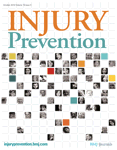Failure to use seatbelts in motor vehicles is a major source of youth injuries, and previous research has noted the widespread non-use of seatbelts in popular media.
OBJECTIVES: To explore whether increased exposure to entertainment screen media was associated with inflated normative perceptions regarding seatbelt non-use, and to determine any associations between normative perceptions and seatbelt non-use.
METHODS: A nationally representative telephone survey of school-aged American adolescents (14-17 years, n=915) measuring: screen media exposure; normative perceptions with reference to friends’ disapproval of non-use, and prevalence of non-use among friends, school peers and peers; and self-reported seatbelt non-use.
RESULTS: Using structural equation modelling, analyses indicate that, after demographic and individual characteristics relevant to screen media exposure and seatbelt non-use had been controlled for, frequent exposure to entertainment media was associated with positive normative perceptions about seatbelt non-use for boys, but not for girls. Normative perceptions related to friends’ and school peers’ seatbelt use were associated with seatbelt non-use for both boys and girls.
CONCLUSIONS: Attempts to increase adolescent seatbelt use could include public communication campaigns to alter normative perceptions. Broadcasting these campaigns in conjunction with the media that under-represent seatbelt use may be a successful strategy for reducing the influence of such media on male adolescents.
Authors
- Sally M. Dunlop
- Daniel Romer


